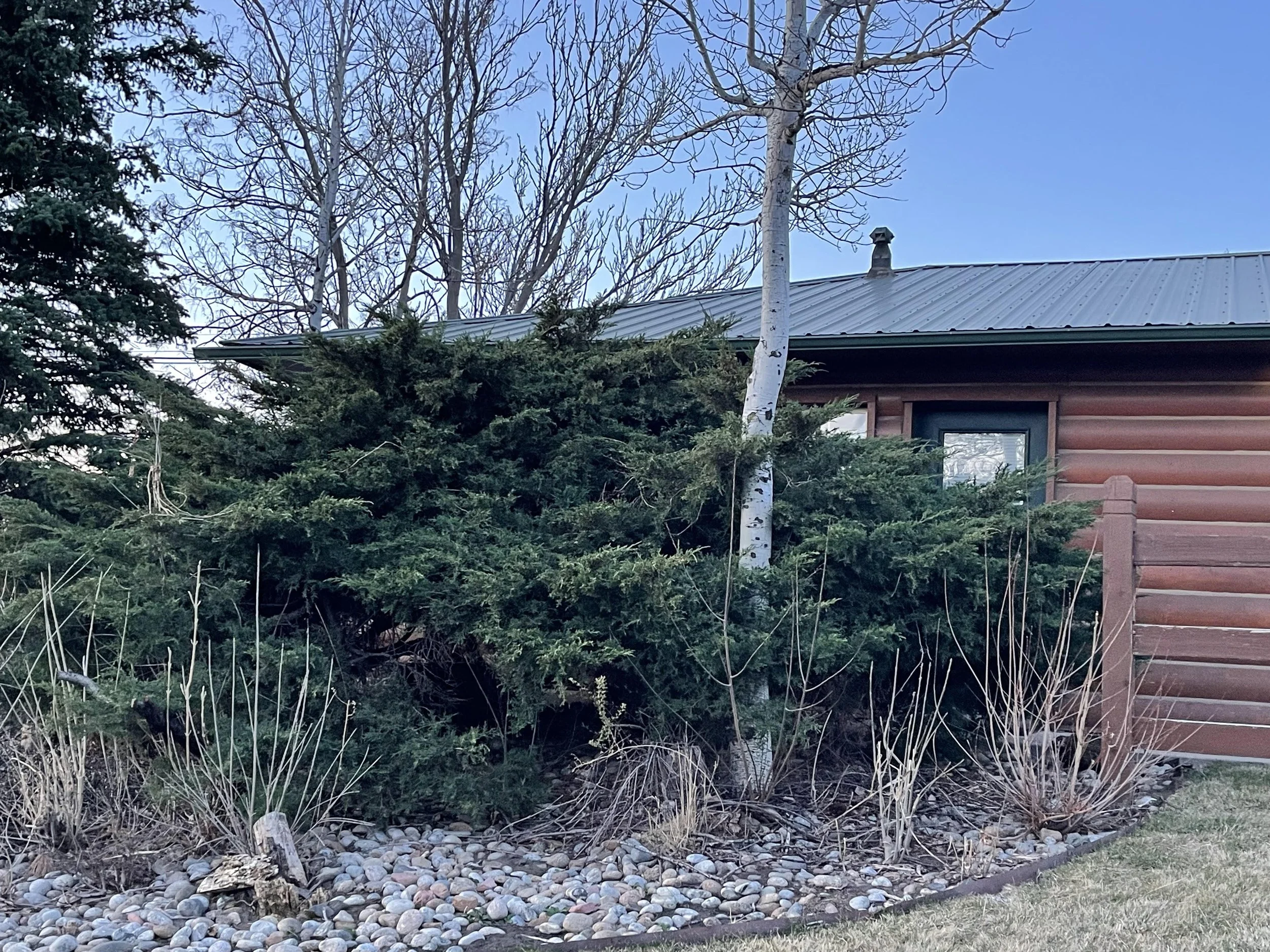Most homes don’t burn down from a wall of flames — they catch fire from a single ember.
Up to 90% of homes lost in wildfires ignite when wind-blown embers land on flammable materials in the landscape — not from direct flames. That’s why FireWise landscaping is one of the most effective ways to protect your home. By designing your yard in zones and choosing fire-resistant plants, you can reduce your wildfire risk by 40–80% while creating a vibrant, drought-tolerant, and pollinator-friendly garden.
🔥 FireWise Landscaping:
Protect Your Home with Purpose
Flammable foundation planting like this is all too common. Junipers, resinous shrubs, or dead perennials close to structures are an open invitation for embers to start a
house fire.
By contrast, a FireWise landscape replaces flammable materials with layered, beautiful, and ember-resistant plantings that reduce fuel and support pollinators and biodiversity.
FireWise Defensible Landscape Zones
This diagram shows how to structure your landscape into four concentric zones, each designed to break up fuel, manage ember exposure, and reduce fire intensity the closer it gets to your home:
Zone 1: 0-5’
This is your home’s ignition buffer—the most important zone to maintain. Use noncombustible materials like gravel or decomposed granite, and only plant low, moisture-rich firewise plants such as sedums, iceplants, and sempervivums. These succulents have high water content and low oil/resin, making them poor ember fuel. Avoid junipers, wood mulch, and flammable shrubs. Keeping this zone clear and clean can be the deciding factor in home survival.
Zone 2: 5-30’
This is your fuel reduction zone. Plants here should be widely spaced, low-growing, and regularly maintained. Choose a mix of drought-tolerant succulents and flowering perennials, and cut them back before fire season to reduce dry debris. Use groundcovers and hardscape elements like stone paths or decorative rock beds to help break up plantings. Remove ladder fuels and keep trees well-pruned and elevated.
Zone 3: 30-100’
This zone is focused on slowing down the fire and keeping it close to the ground. Trees here should be small and well-spaced (10 ft between crowns) and pruned to remove lower limbs. Shrubs should be low-resin, firewise species that are maintained for airflow and fuel breaks. Avoid dense thickets, woody debris, or unmanaged vegetation. This is where design and upkeep work together to lower fire intensity before it reaches the inner zones
Zone 4: 100’+
If your property extends into native land or open space, this zone transitions from cultivated landscape to well-managed natural environment. Here, thinning trees, removing invasive species, reducing overgrowth, and maintaining spacing is key. Focus on maintaining native trees and understory plants in a way that reduces fire fuel without removing biodiversity. A managed native landscape can serve as a protective buffer while also supporting wildlife and ecological health.
🌱 FireWise is Beautiful, Resilient, and Ecologically Smart
It’s drought-tolerant, reducing water usage in dry climates.
It supports pollinators and biodiversity, offering habitat for bees, butterflies,
and birds.It aligns with ecological stewardship by minimizing invasive species and excessive irrigation.
And it still creates gardens full of color, form, and seasonal beauty.
🔧 Need Help Getting Started?
We offer FireWise design consultations and planting plans tailored to your site, goals, and style. Whether you're starting from scratch or retrofitting an existing garden, our team will help make your landscape safer—and stunning.



